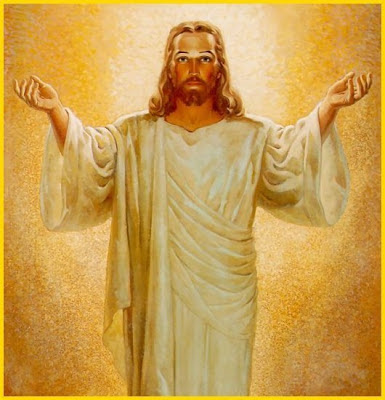The difference between school and life? In school, you're taught a lesson and then given a test. In life, you're given a test that teaches you a lesson.
Thursday, February 28, 2013
Holidays
- Medieval holidays honored important events in the life of Jesus, such as his birth and Resurrection. Holidays also honored Christian saints and important religious concepts.
- People celebrated holidays by attending church and with feasts, music, dancing, games, and other forms of entertainment.
 |
| Battle of Carnival and Lent by painter Pieter Brueghel |
Wednesday, February 27, 2013
Art and Architecture
- Since most people could not read, art helped them understand Biblical stories.
- Cathedrals were large churches and the seat of a bishop. Some key features included the nave, transepts, flying buttresses, gargoyles, pillars, and stained glass windows.
 |
| flying buttresses |
 |
| nave |
 |
| Cathedral ground plan. The shaded area is the transept; darker shading represents the crossing. |
.jpg) |
| transept |
 |
| gargoyles |
 |
| pillars |
 |
| stained glass window |
Tuesday, February 26, 2013
Monday, February 25, 2013
Pilgrimages and Relics
A journey, especially a long one, made to some sacred place as an act of religious devotion
People went on pilgrimages to show devotion to God, as an act of penance, or to find a cure for an illness. Popular destinations included Jerusalem, Rome, and Canterbury.
People went on pilgrimages to show devotion to God, as an act of penance, or to find a cure for an illness. Popular destinations included Jerusalem, Rome, and Canterbury.
| The hill of apparitions in Medjugorie, Bosnia and Herzegovina. |
 |
| Some European pilgrims on the ancient pilgrimage road to Santiago de Compostela in 2005. |
.jpg) |
| Saint Catherine's Monastery, Mount Sinai |
The 7 Sacraments
Baptism ... Birth
Confirmation ... Young Adult
Eucharist ... The Body if Christ
Matrimony
Holy Orders ... Becoming a Priest or Nun
Penance ... Confession of Sins
Last Rights ... Death
- The church taught that Christians had to receive sacraments in order to achieve salvation.
- The seven sacraments were baptism, confirmation, Eucharist, matrimony holy orders, penace, and extreme unction.
Friday, February 22, 2013
The Role of the Christian Church in Medieval Europe
.jpg) |
| The Mass of Saint Giles, painted around 1500 |
- Initially, the Romans persecuted Christians for their beliefs.
- By the start of the Middle Ages, all Christians in western Europe belonged to a single church, which became known as the Roman catholic Church.
- The church provided leadership and over time developed an organization that was modeled on the structure of the Roman government.
- Monasteries, or communities of monks, copied and preserved old texts, and in this way helped keep learning alive.
- During the Middle Ages, the church acquired great economic and political power that at times rivaled that of the monarchs.
Wednesday, February 20, 2013
Medieval Peasants
 |
| Typical thatched roof home of the peasants |
 |
| The Peasant Wedding, by Flemish painter Pieter Brueghe |
Tuesday, February 19, 2013
Medieval Monarchs
- At the very top of feudal society were the monarchs, or kings and queens.
- They believed in the Divine Right of Kings, the idea that God had given them the right to rule.
- They were responsible for keeping order and providing protection for the entire kingdom.
Medieval Kings
Medieval Kings & Queens
Medieval Kings Clothing
Medieval Castles
 | ||
Bodiam Castle, built in the 14th century in Sussex, England
|
 |
| inside the castle walls |
http://medievaleurope.mrdonn.org/castles.html
http://www.medieval-castle.com/
http://www.medieval-castles.net/
Top 100 Medieval Castles
Parts of a castle
http://www.medieval-castles.org/
When I was in college one of my history professors had us watch this to get a visual of Medieval Life.
Friday, February 15, 2013
Wednesday, February 13, 2013
Subscribe to:
Posts (Atom)

































